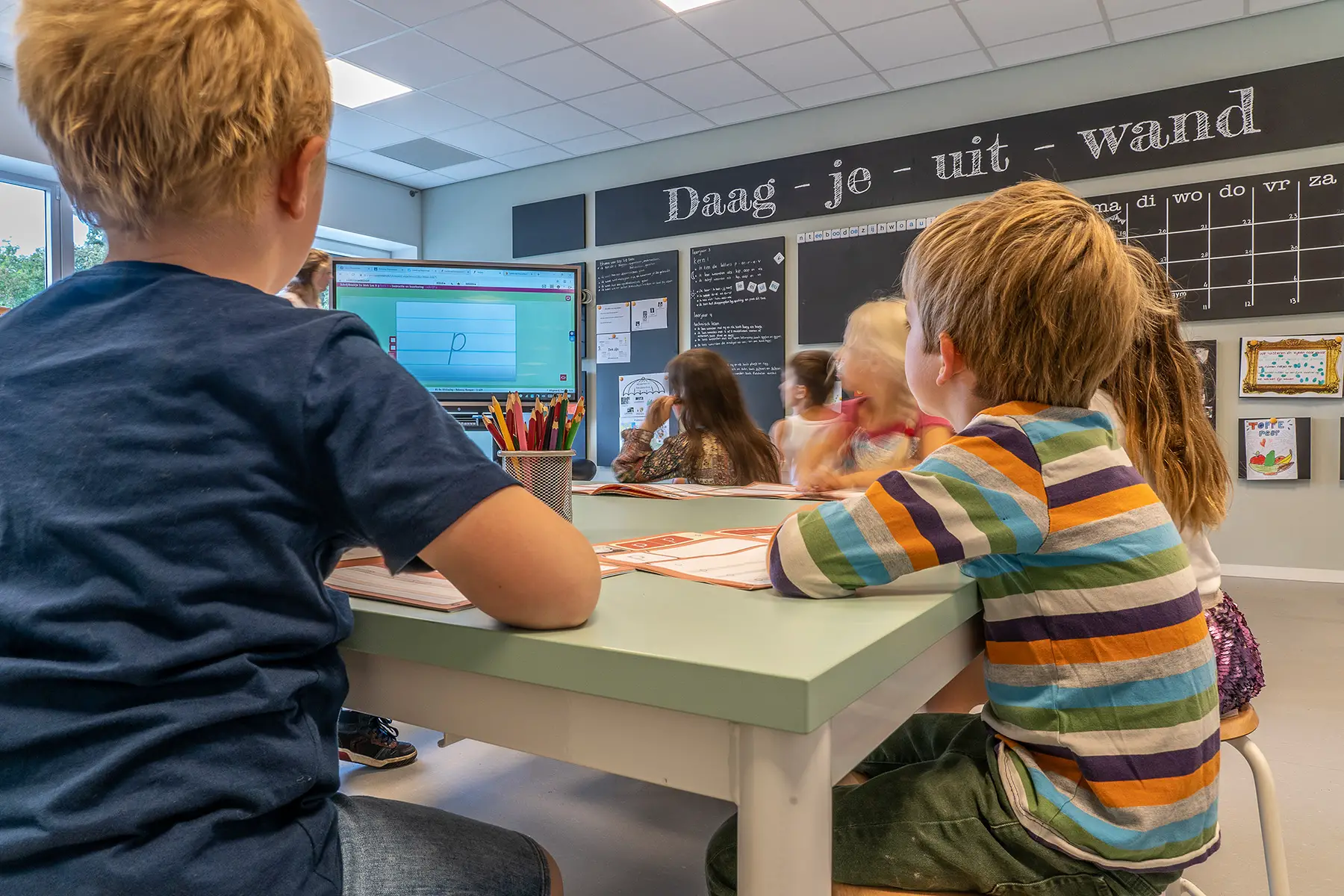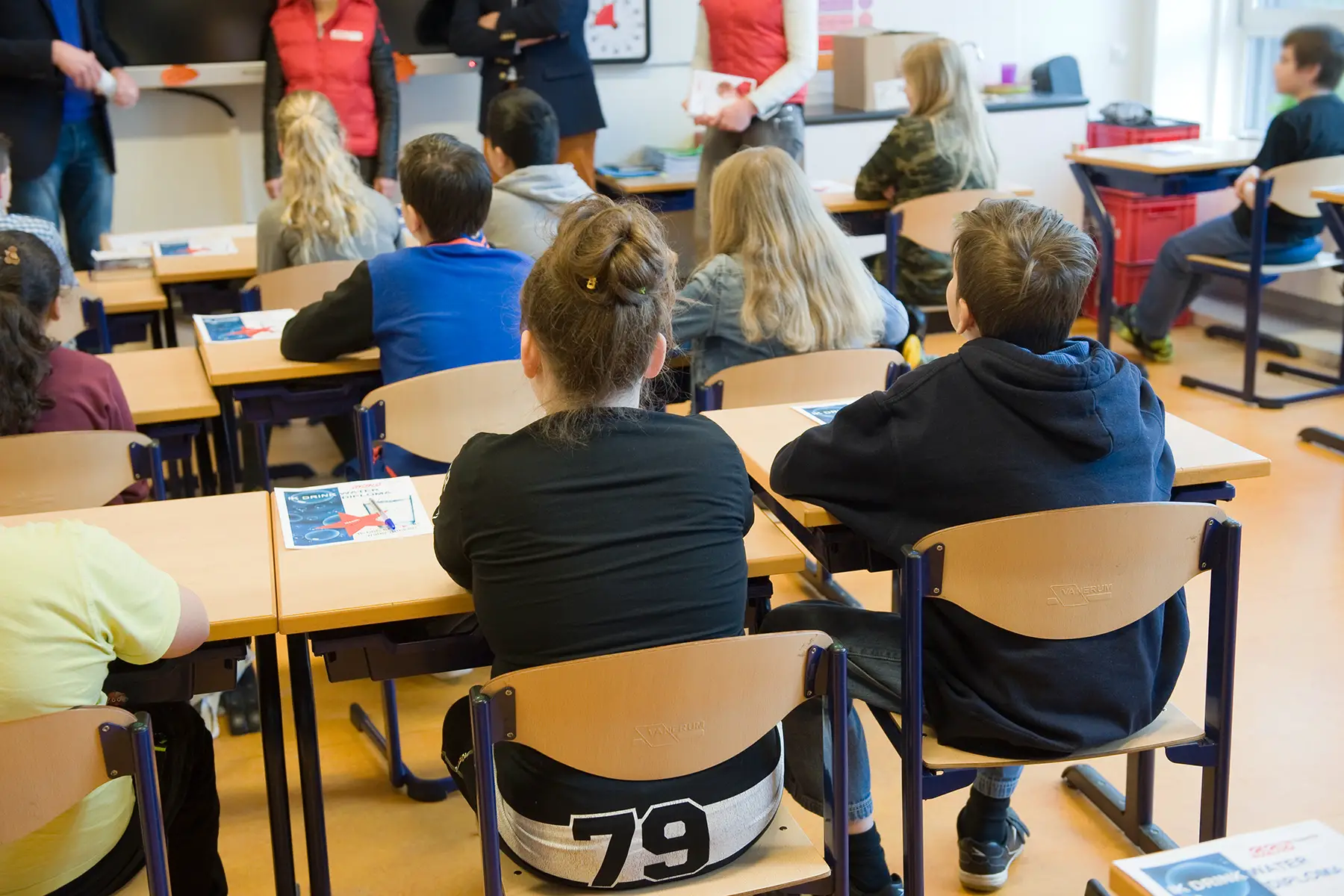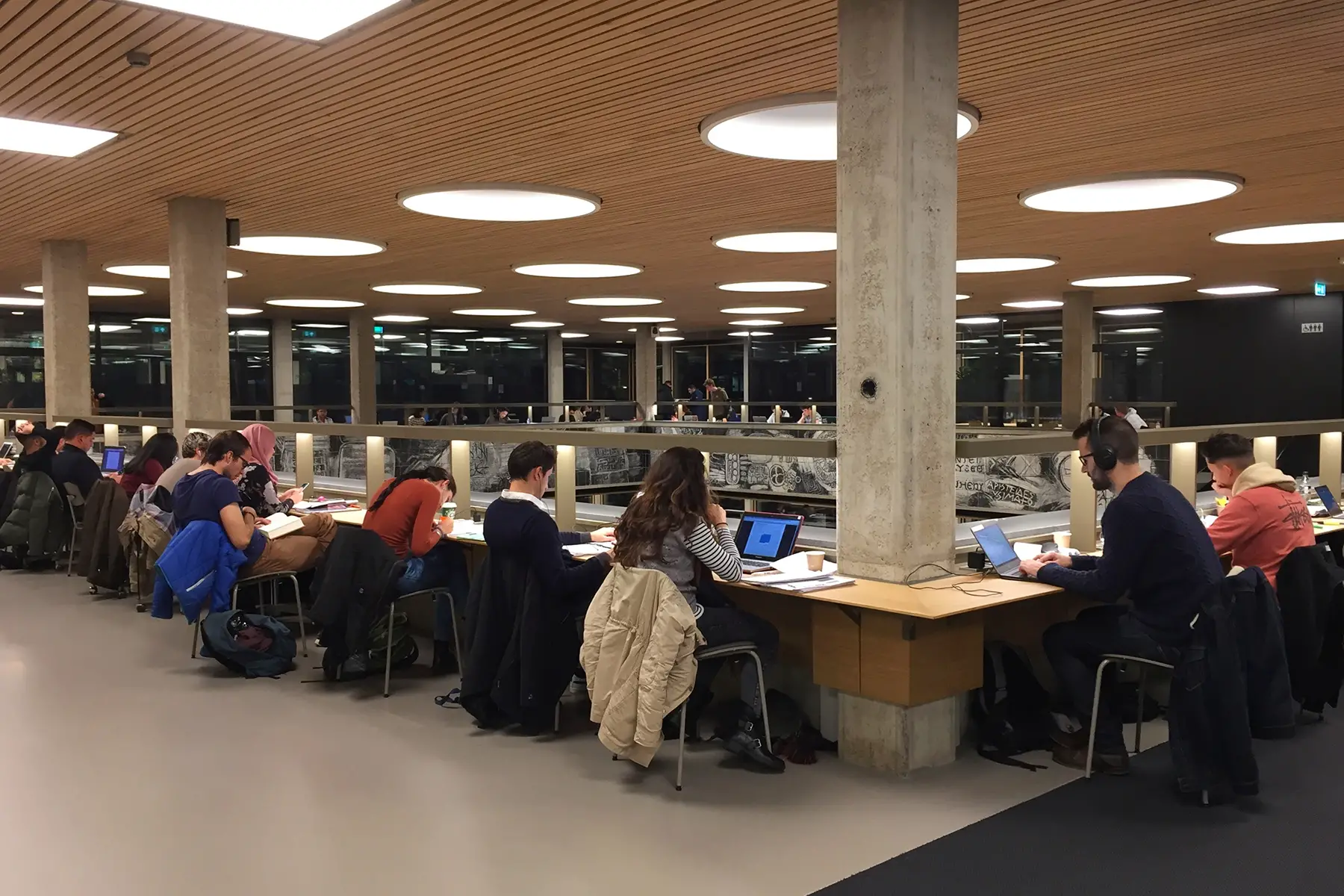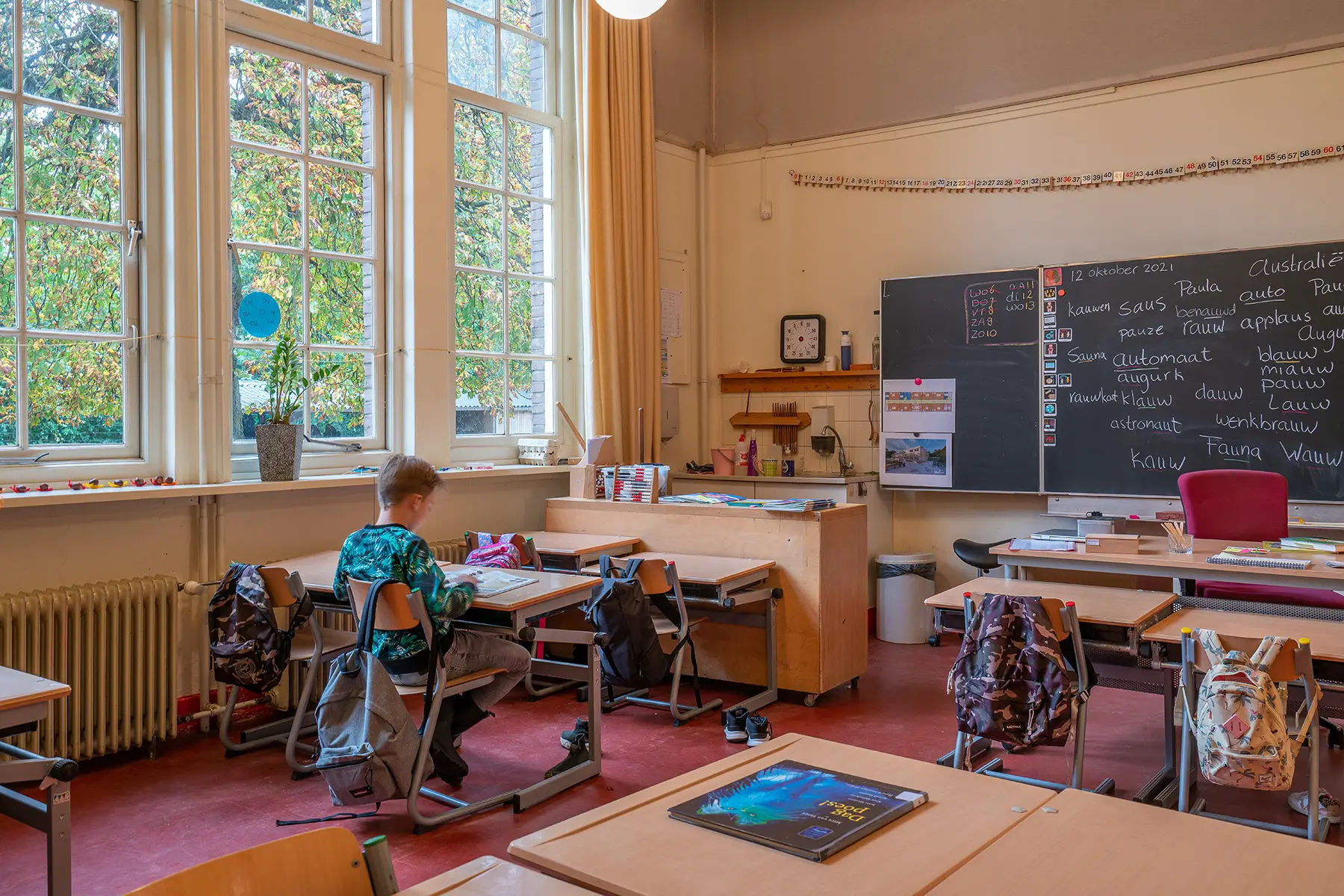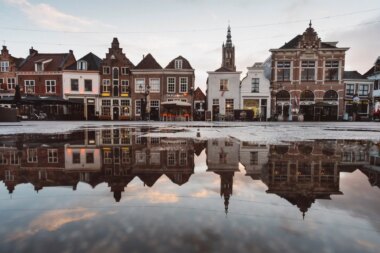The Dutch secondary school system is rather complicated and organized very differently from most other countries. Different types of public schools, different streams, different international options. Worst of all, before being able to make an educated decision about your child’s orientation, you will have to familiarize yourself with a bunch of acronyms.
But fear not – this guide will help you put the puzzle together. It includes the following sections:
- The secondary education system in the Netherlands
- Government-funded schools in the Netherlands
- The three streams of Dutch secondary education
- The curriculum in Dutch secondary schools
- State-funded schools in the Netherlands: registration and costs
- International schools in the Netherlands
- Private secondary schools in the Netherlands
- Useful resources
Amity International School Amsterdam
Amity International School Amsterdam is a global learning environment located in Amstelveen for students from 3–18 years old. As an accredited IB World School, it offers the IB Continuum for the Primary Years Programme, the Middle Years Programme, and the Diploma Programme. Amity provides a broad, thorough education for all ages that combines academic excellence with a variety of opportunities in sciences, the arts, and more. See what future Amity could offer your children today.
The secondary education system in the Netherlands
Children have to stay in school from age 5 to 18, or until they have a diploma. After group 8 of primary school (basisschool), when most children are 12, they transfer to secondary school (middelbare school).

Unlike what you may be used to in your home country, there is no middle school. In other words, there is no distinction between Junior and Senior High. Children go straight from primary (basisschool) to secondary (middelbare school), all the way to graduation.
Types of schools in the Netherlands
Choice in education is very important to the Dutch. For that reason, the options may appear endless, and at first glance confusing, but in brief there are three main types of secondary schools in the Netherlands:
- government-funded schools: openbare, bijzondere, and bilingual schools
- private schools
- international schools
Government-funded schools in the Netherlands
While there are a few private schools in the Netherlands, the vast majority of Dutch students attend government-funded schools. Within these, there is a distinction between openbare (public) and bijzondere (special) schools.
The Ministry of Education, Culture and Science (OCW) establishes the basic curriculum for the school year. Although openbare and bijzondere schools have to adhere to these core objectives set by the government, the individual schools may ‘fill in the details’ of the curriculum and budget allocation. This results in many differences between schools, and means you’ll have to do your own homework before registering your kid. So let’s take a closer look at the options.
Openbare and bijzondere schools
Public (openbare) schools are publicly funded and run by an independent foundation originally set up by the government. They are always non-religious, but they may follow particular philosophies usually found in special (bijzondere) schools, such as Montessori, Waldorf, Dalton or Jenaplan. If you are interested in these educational approaches, you should first make sure to understand how the school has implemented them, as it could be different from what you are used to in other countries.

However, about three quarters of all secondary students attend a bijzondere school, which have their own board and often follow particular religious or pedagogic principles. Those can be educational philosophies as seen above, or focused on Catholic, Protestant, evangelical, Islamic, Jewish, Hindu, or humanistic ideologies. Bijzondere schools have had equal state funding to openbare schools since 1917 (Freedom of Education Act), and are not to be confused with private schools.
The choice is so wide that you’ll also find some schools with a special focus on culture, sports, arts, science, or research and design. There are even Top Sports and Talent schools, designed specifically for students with outstanding talents and abilities.
But what about languages?
Government-funded bilingual schools
Over 130 Dutch secondary schools offer a bilingual curriculum. At these TTO (Tweetalig onderwijs) schools, some of the courses are offered in Dutch and others in English. Many of these schools award an IB-certificate English A2, or a Cambridge Certificate upon graduation to prove the student’s level of English, on top of their regular VMBO, HAVO, or VWO-diploma.
Supreme College Nederland in Castricum is a TTO, offering the MYB program of the International Baccalaureate in addition to the VWO, at a fraction of the cost of a private international school.
Additionally, there are a couple of TTO schools in the northeast and southeast of the Netherlands, close to the German border, which provide Dutch-German bilingual education. You can learn more about English and German TTO schools in this pdf (in English) on the website of Nuffic, the official organization for bilingual education in the Netherlands.
It is important to note that a student needs to speak Dutch well before they can enroll at a bilingual school, since all the final exams are in Dutch. If students don’t speak Dutch, they should first attend a Dutch immersion class, called ISK. Another option of course is an international school – which we’ll explore further down.
Special needs education in the Netherlands
Also called VSO (Voorgezet Speciaal Onderwijs), special secondary education is for students with special needs, such as deaf or visually impaired pupils, disabled children, or children with an intellectual disability, long-term illness, or behavioral issues. In parallel, there is also a lwoo program to help students with difficulties follow the pre-vocational program.
The three streams of Dutch secondary education
A distinctive feature of Dutch secondary schools (openbare, bijzondere or private) is that, at the end of primary school, the students are streamed towards one of three different paths of secondary education:
- VMBO: vocational education
- HAVO: general education
- VWO: pre-university education

The advies (recommendation) from the school on which stream to follow depends on the child’s academic performance, as well as on their interests, intelligence, motivation, study skills, eagerness to learn, and ambitions. Additionally, the students take the end test (eindtoets) of primary school. If the test results are higher than the teacher’s recommendation, the advice may be upgraded. When the test results are lower, then the teacher’s recommendation stays. However, if the final recommendation does not follow the student’s wishes, they are free to apply to a program from a different stream, but it’s then up to the secondary school to accept them or not.
Now let’s look at what these different secondary school streams entail:
VMBO
VMBO takes four years and stands for pre-vocational education, focusing on practical knowledge. Nationally, around 50% of students attend a VMBO school. VMBO students specialize in one of four sectors, combining general and vocational education:
- Technical
- Agriculture
- Economics
- Care & Welfare
With a VMBO diploma, students may proceed to Senior Secondary Vocational Education (called MBO) to learn a profession such as plumbing, hairdressing, or nursing. After MBO, some students move onto HBO, which is a bachelor at a University of Applied Sciences.
However, VMBO diploma in hand, they may also choose to stream into the penultimate (4th) year of HAVO instead.
HAVO
HAVO lasts five years, and stands for Senior General Secondary Education. Students prepare for higher professional education, to obtain a bachelor’s degree at a University of Applied Sciences (HBO). These educate for professions like teacher, accountant, or architect. About 24% of all students attend this type of school.
With a HAVO diploma, they may also stream into the penultimate (5th) year of VWO.
VWO
VWO, which translates as Preparatory University Education, takes six years, and about 22% of students take this route. This branch focuses more on theoretical knowledge to prepare students for research universities where they’ll study for careers such as lawyer, psychologist or researcher.

Please note (because this is not complicated enough yet), there are two types of VWO: Gymnasium and Atheneum. The difference between the two is that Gymnasium students must study Latin and Ancient Greek language and culture.
Bridge year or brugklas
Many secondary schools combine different streams in the first year, which they call brugklas, or ‘bridge class’. It gives pupils an extra year (sometimes even two) to decide which path they’ll choose. The other advantage is that they also get a chance to adjust to their new responsibilities and independence.
The curriculum in Dutch secondary schools
Class composition
Especially in the bigger cities, schools have an average of 25 students per class, and often fewer for the elective subjects. Boys and girls are always mixed in class.
Ranking
The Dutch rank highly in many fields of education. The renowned global PISA/OECD rankings for 15-year-olds, list the Netherlands as one of the highest in performance, especially for math. The PISA results for reading have been declining over the past years, however. This is most apparent among pupils with a lower socio-economic status who don’t speak Dutch at home. The government has taken some recent actions to improve this situation.
Vacations
The Dutch school calendar allows for 12 weeks of vacation per year. After every 6–7 weeks of school, the students are off for 1–2 weeks. The summer vacation, the exact timing of which varies each year, lasts for six weeks.
Students may only miss school for very specific reasons, like an important family celebration or emergency, or when their parents can prove they couldn’t go away during the school vacations because of work.
School hours
As you might have suspected by now, the school hours aren’t fixed either. Most schools start between 8:00 and 9:00 and finish between 14:00 and 16:00. It is common for each day to have a different schedule, and this often changes every three months. The schools may also decide how long a ‘school hour’ is – ranging from 45 to 75 minutes. The shorter the school hour, the higher the number of subjects taught per day.
By law, schools have to teach a minimum of 3,700 (four years of VMBO education) to 5,700 (six years of VWO) hours in total. This translates to 20–30 hours per week, including at least two hours of gym class/physical education (PE) and a minimum of 45 minutes’ break time per day. In addition, most schools assign about 1.5 to two hours of homework each day. Schools typically organize a few after-school activities on campus, but the main idea is that students take part in sports clubs or other (usually subsidized) activities in their local community.
Common curriculum
A few subjects are compulsory for everyone independent of stream, such as Dutch and English language and literature, social studies, and cultural and artistic education, as well as gym class/physical education. In most cases, students also need to pick some type of math, and one other foreign language – often German or French.

In the last years of HAVO and VWO, students have to choose one of four profiles, each of which concentrates on a certain field of study:
- Science and Technology
- Science and Health
- Economics and Society
- Culture and Society
Grading
At first, you may also have some difficulty understanding the grading system in Dutch schools. The teachers grade their tests and exams with a mark from 1 (lowest) to 10 (highest), to one decimal point, with 5.5 being the minimum pass grade, which is called a voldoende.
The teachers decide how to grade each test individually, depending on the level of difficulty of the assignment and the importance of the topics at hand. A 10 is only awarded when a student has answered every question perfectly, which rarely happens with open-ended questions. An 8 is considered a good score, but you’ll find many students being equally happy with a sufficient grade (5.5). In most cases, they can use a sufficient grade to compensate for an insufficient one. If they are unable to do so, they’ll have to repeat the year, but generally, there is no stigma around this. Since it is pretty common to move up to the next level after obtaining a diploma, the age gap in one class can easily be 2–3 years.
Graduating from secondary school in the Netherlands
For VMBO students, the number of exam subjects in their final year varies between five and seven, depending on their chosen profile. HAVO students need to take their national exams in at least seven subjects, and VWO students in eight subjects. The students have to take several tests and practical assignments for each chosen subject. These are called the school exams and are created by the teachers. The combined grades of these school exams count for 50% of their final grade. The other half consists of the national exams (Centraal Eindexamen), which are the same for every school of the same level in the country, and are held at exactly the same time.
Students graduate from secondary school if they have an average of 6 for all their exam subjects combined. This means that sometimes they are allowed to get a few insufficient grades. They may retake one exam to try to raise their average, and then pass. In most cases, university admissions require a relevant secondary school diploma and put little significance on the list of grades.
Diploma
After passing the exams in their final year of secondary school, students will get a diploma. With this diploma they may apply for higher education, or for the next level of secondary school (from VMBO to HAVO or from HAVO to VWO, for example). For all levels combined, more than 90% of students obtain a diploma each year.
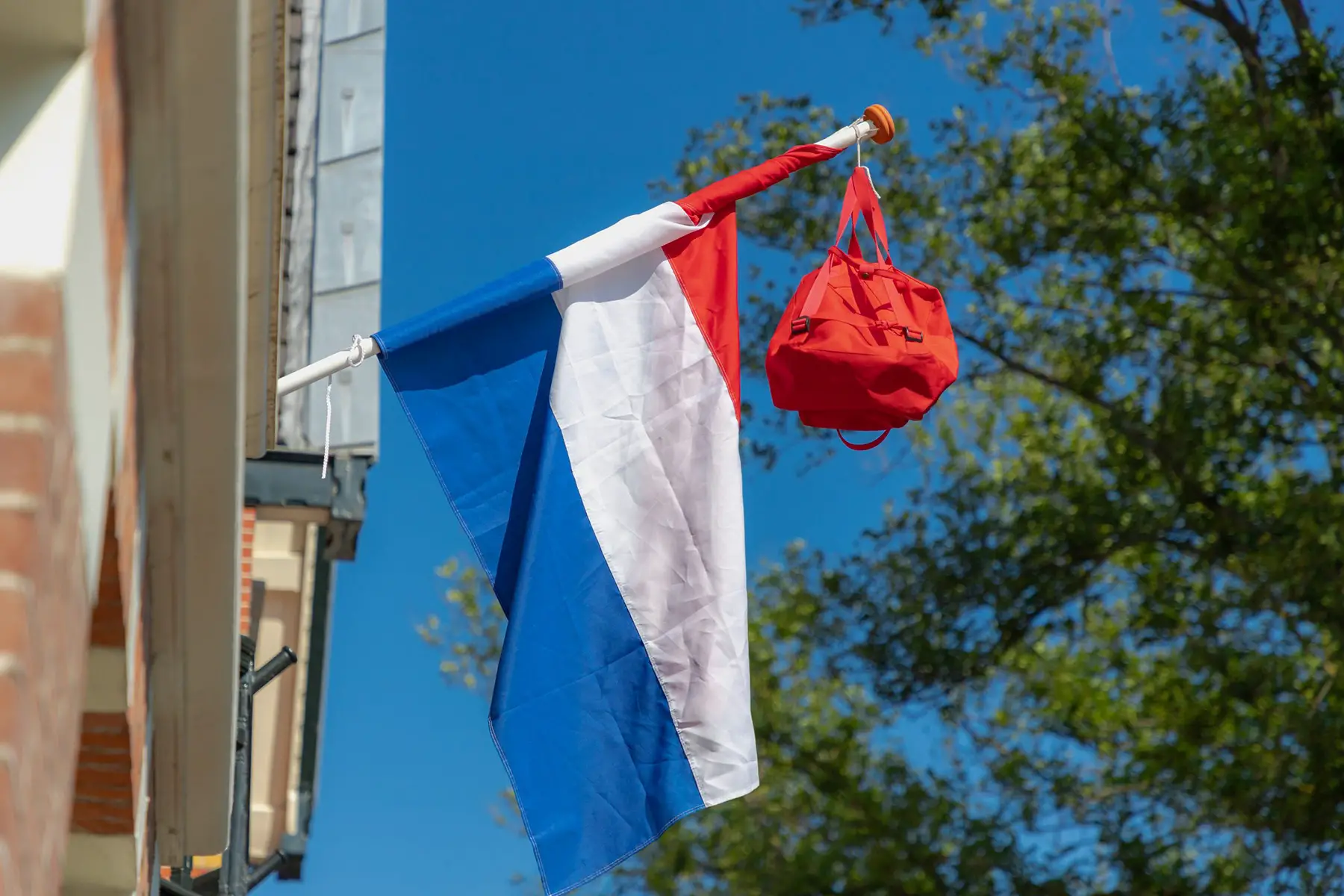
Fun fact: ever wonder why, in late Spring, some houses sport a flag and backpack? Graduating students simply hang their now obsolete school bags to proudly show off their accomplishments.
State-funded schools in the Netherlands: registration and costs
Once you receive the recommendation from your child’s school on which stream they should follow, it’s time to apply to your choice of secondary institution. Let’s take a look at the process, the costs, and if you still have doubts, the pros and cons of public Dutch schools.
Applying to government-funded secondary schools in the Netherlands
The school application policy varies per city. Usually, you may apply for all the schools that offer the level of your child’s stream advies (recommendation from your primary school) in your city. If this type of school is not available in your (smaller) town, your kid may apply for the schools in a nearby bigger town as well. It is very common for students to cycle up to 30–45 minutes to school, crisscrossing through the city.
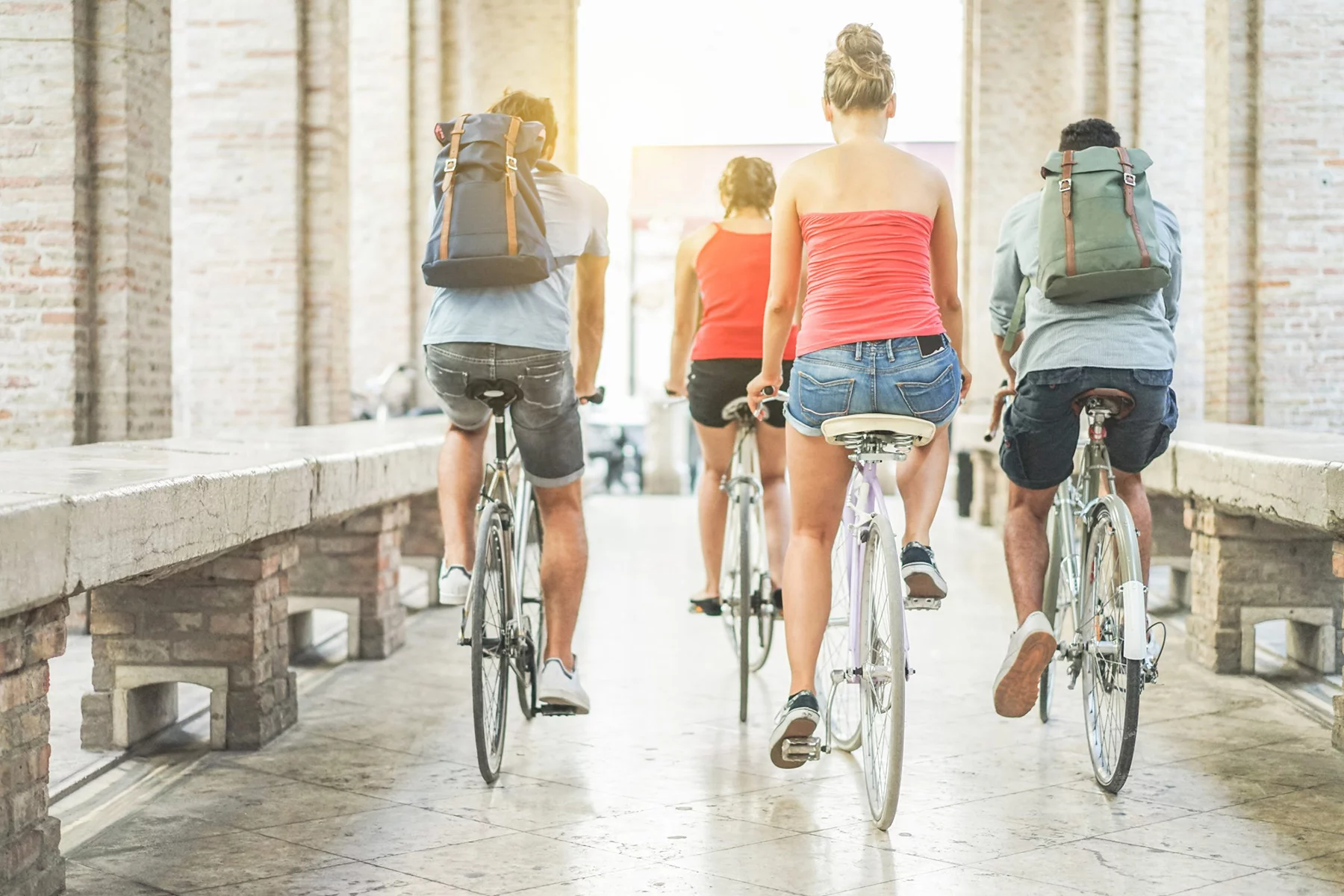
In most bigger cities, enrolment is decided by a lottery procedure carried out by the municipality. The students need to make a preference list of a (vast) number of schools. On the day of the lottery, which is usually around April, they will hear at which school they got a place. This procedure always leads to many relieved students, but also some who end up with their 10th school of preference and are (understandably) very frustrated.
Costs of schools in the Netherlands
Almost all schools in the Netherlands are funded by the government, and the overall quality of both openbare and bijzondere schools is high. Education at these schools is free, but you will be asked for a voluntary parent contribution (ouderbijdrage) with which the school pays for extra things like cultural activities, library books, excursions, and various school trips (in the penultimate year, it is very common to go on a work week to another European city).
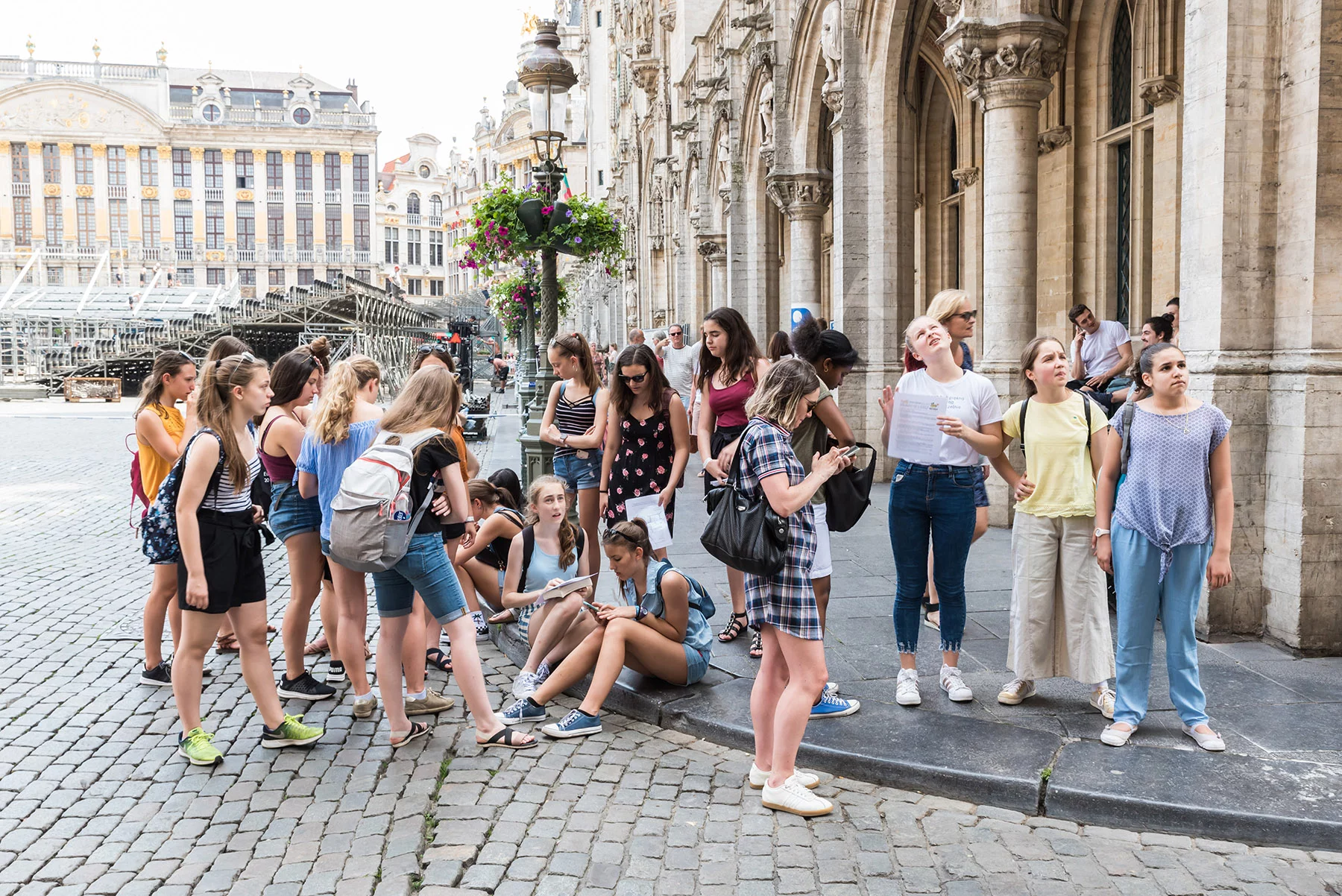
On average, the parent contribution is lower than €200 per year, but some of the bijzondere schools ask more. Parents who cannot afford this contribution can get subsidies from the municipality. Often the school has some reserves as well in this case.
School books are free, but students do have to buy their own school supplies, gym clothes, and lunch. Some schools ask the parents to provide a laptop or tablet, but they cannot oblige them to do so.
Pros and cons of government-funded schools in the Netherlands
Most children in the Netherlands go to a government-funded school, and their parents have low education costs. In general, the quality at these schools is high. Especially in the bigger cities, though, some schools are suffering from a teacher shortage. This sometimes results in nearly-graduated trainee teachers teaching a class by themselves, or in more extreme cases, classes being canceled and the students being left to their own devices.
For most parents, the biggest advantages of Dutch schools are that they are free (except for the aforementioned parental contribution), and that their children feel more at home in their local neighborhood. If your family is immigrating rather than spending just a few years in the Netherlands, a Dutch school will help your kids integrate better, and prepare them for a future (university and career) in the country.
International schools in the Netherlands
Some international schools are subsidized by the Dutch government, and parents pay around €7,000 per year for secondary school, plus a few hundred extra in the exam years. These schools teach in English and follow an international curriculum. They usually teach a bit more Dutch compared to the private international schools, and encourage their pupils to take part in local after-school activities. The subsidized schools are intended for families who are staying temporarily in the Netherlands (though once your child is in, they are in), and they roughly follow the calendar of the Dutch schools.
There are a number of international secondary schools located throughout the Netherlands. Be sure to do your research to understand which is the best option for you and your child(ren). International schools in the Netherlands include:
- Amity International School
- Supreme College Nederland
- The British School of Amsterdam
- The International School of Amsterdam
- The International School of The Hague
Some other international schools are funded by the country or region they are affiliated to, for example the French, Japanese or European schools. Their parents pay similar amounts as they would for the Dutch government-subsidized international schools.
The private international schools usually teach in English, and commonly offer more facilities and extra-curricular activities than the subsidized international schools. They have their own vacation schedules.
International Baccalaureate in the Netherlands
There are just over 20 schools in the Netherlands where you can study for your IB diploma. You could see the IB as the international equivalent of the Dutch VWO. The majority of these schools are international, but a few Dutch schools have recently started offering an IB diploma as well.

Three international schools – two in The Hague and one in Amsterdam – offer the Career-related Programme (IBCP), which is comparable to HAVO.
Pros and cons of international schools in the Netherlands
International schools cater to the international community. This is often the best solution for families who are only in the Netherlands for a short period, or if their children are already older.
Contrary to virtually all Dutch schools, most international schools combine primary and secondary school in the same building, which makes the logistics easier for families with children of different ages.
Since the amount of Dutch taught at international school is rather limited, their students often don’t speak enough of the language to make local friends. Many families at the international school also tend to leave the country after 2–3 years.
Private secondary schools in the Netherlands
There are a very small but slowly increasing number of private schools in the Netherlands. Across the whole country, there are around 40 Dutch private secondary schools, with a total of about 3,000 students. There are also a few international private schools. The private schools don’t receive state funding, but do have to be officially recognized by the municipality, and undergo the regular school inspections. In most cases, parents pay between €20,000 and €35,000 per year, per child.
Private schools offer more individual attention in smaller classes, a personalized curriculum, and specialized support in case of learning difficulties. Many of the private secondary schools help students prepare for their final exams. It is very common for students to attend these schools for just a few years; they rarely go to one for their whole secondary school career.
Boarding schools in the Netherlands
Boarding schools aren’t particularly common in the Netherlands. There are only a few options, mainly intended for children whose parents work on a ship, or at carnivals. There is one international boarding school, located in Eerde, near Zwolle.
Useful resources
- Dutch Inspectorate of Education – responsible for the inspection and review of schools and educational institutions in the Netherlands (in English).
- Scholenopdekaart – test results and other info on all government-funded primary and secondary schools in the Netherlands (in Dutch).
- Schoolwijzer Amsterdam – info on all government-funded primary and secondary schools in Amsterdam, including their application policies
- Nuffic – the official Dutch organization for TTO bilingual education
- EURYDICE – an overview of the Dutch education system by the European Commission (in English).


